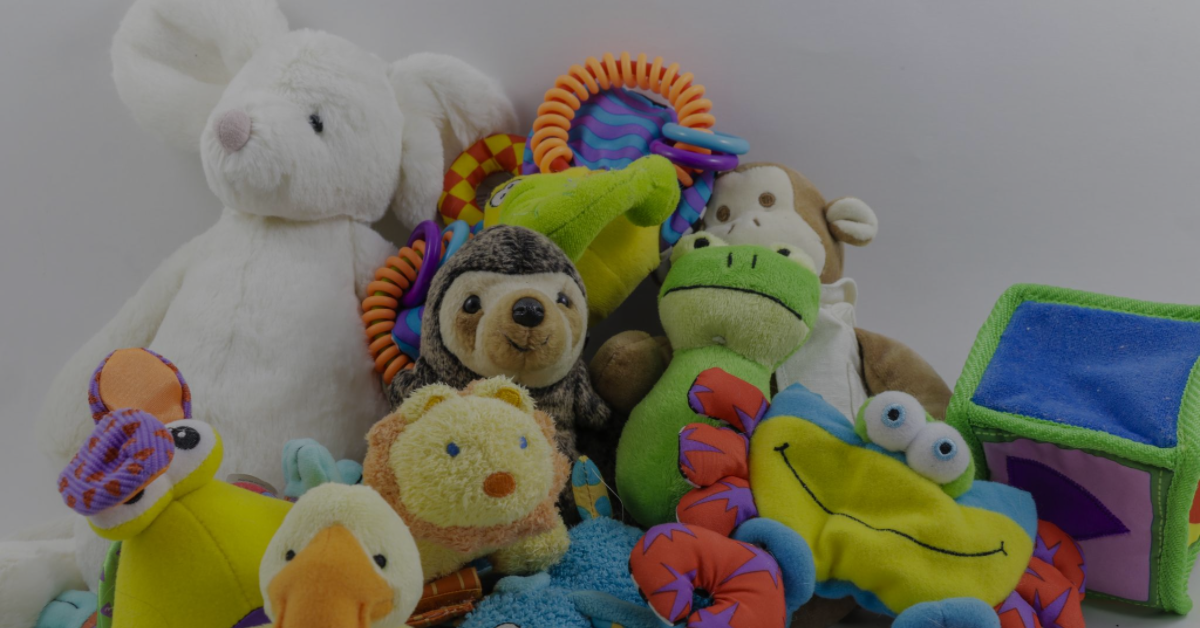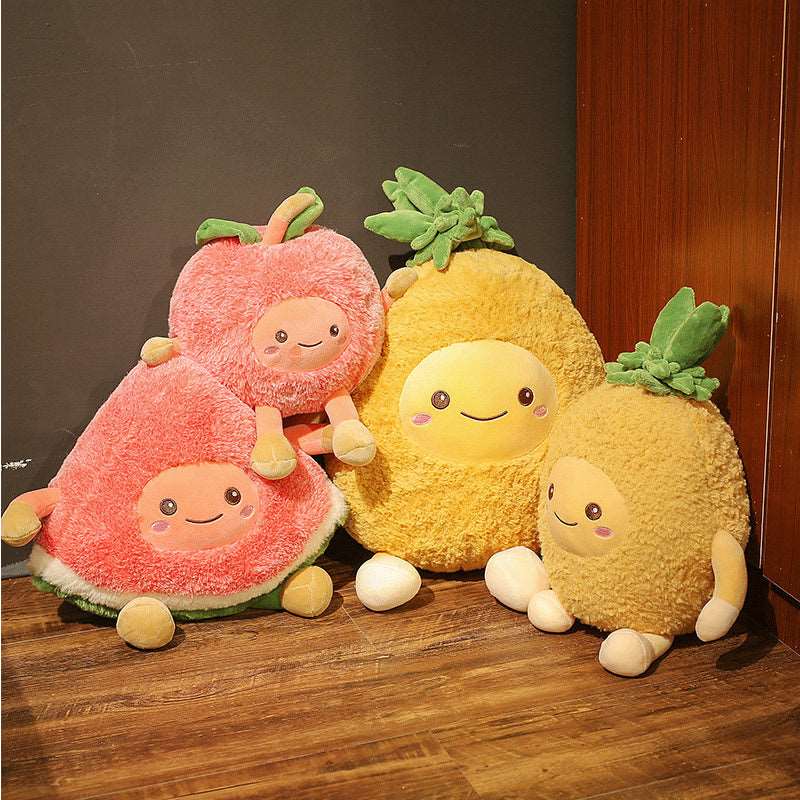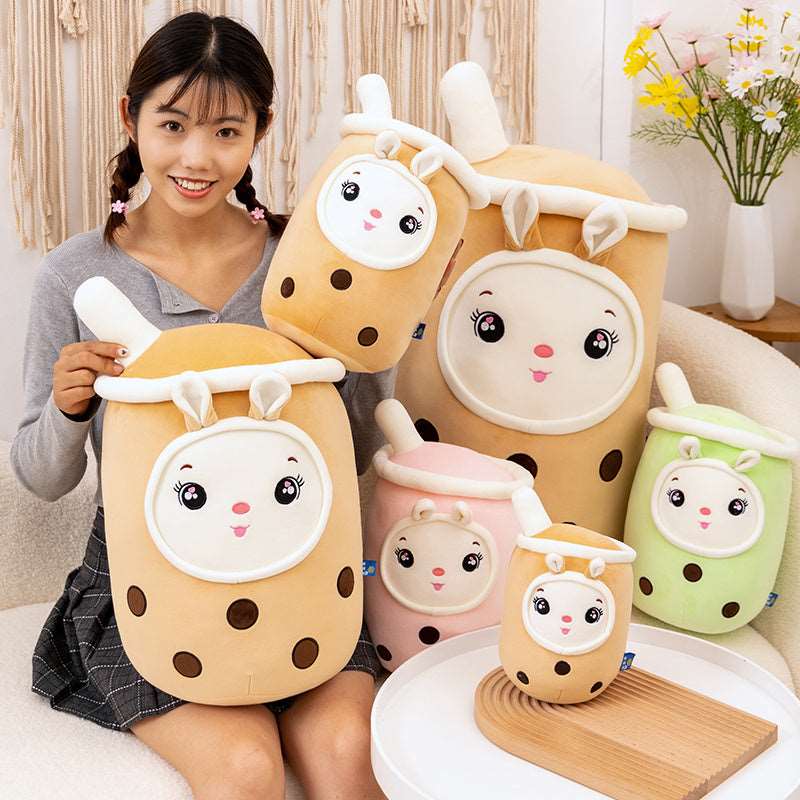

· By The Wakaii Team
Discover the 10 Best Fabrics for Plushies
Looking to buy a plushie or make one yourself? The fabric matters a lot!
It can make your plushie soft and cuddly or not so much.
In this guide, we'll go through the top 10 fabrics for plushies, their pros and cons, and how to use them.
Whether you're shopping or crafting, you'll know exactly what to pick.
Let's get started!
Top 10 Fabrics for Plushies
1. Felt: The Beginner's Best Friend

Felt is a non-woven fabric that's easy to work with, making it a popular choice for beginners. It's available in a wide range of colors, and it's fairly inexpensive.
However, while it's easy to handle and cut, felt is not as durable as some other fabrics.
Felt doesn't extend which means it can be unforgiving when it comes to mistakes. Also your plushie won't look that "fluffy".
You should also know that there are many types of felt, and they can vary in quality and durability.
2. Fleece: The Cuddly Choice

Fleece is a synthetic fabric known for its warmth and softness.
It's a common choice for plushies because of its cuddly feel. Fleece is durable and machine washable, and it's available in a variety of colors and patterns.
However, it can stretch, which might distort your plushie's shape over time.
And while it's warm and soft, it's not as breathable as natural fabrics which might be a consideration if your plushie is going to be snuggled a lot.
3. Faux Suede: The Luxurious Option

Faux suede offers the look and feel of suede without the high cost or maintenance.
It's a great choice if you're looking for a fabric that's soft, luxurious, durable and stain-resistant! Quite a list right?
However, like fleece, faux suede is a synthetic fabric, so it's not as breathable as natural fabrics. It can also be a bit trickier to work with than some other fabrics, so it might not be the best choice for beginners.
4. Cotton: The Versatile Classic

Cotton is a natural fabric that's loved for its versatility.
It's easy to work with, breathable, and available in a wide array of colors and prints. This makes it a great choice if you want to create a plushie with a specific pattern or color scheme.
However, it's worth noting that cotton isn't as plush or soft as some other options, and it has a tendency to fray. This means you might need to put in a bit more effort to prevent fraying and use a lot of stuffing to achieve the desired softness.
Alternatively, you can follow the latest trend and use cotton as an accent fabric in your plushies.
5. Faux Fur: The Fluffy Favorite

Faux fur is a synthetic fabric that's designed to mimic the look and feel of real fur.
You'll rarely ever find a plushie made solely of faux fur. However, it's a fantastic choice if you're making an animal plushie and want to give it a realistic, fluffy coat or long hair.
Faux fur is soft and warm, but it can be a bit challenging to work with, especially for beginners. The fibers can shed when cut, and it requires careful sewing to make sure the fur doesn't get caught in the seams.
6. Minky: The Plushie Pro's Pick

Minky is a plush, microfiber fabric that's incredibly soft and cuddly, making it a favorite among plushie makers.
It's similar to fleece, but it's even softer and thicker, giving your stuffed animals a luxurious feel. Minky is also durable and machine washable.
However, it can be a bit slippery to work with, so it might be a bit challenging for beginners.
7. Polyester: The Durable Choice

Polyester is a synthetic fabric that's known for its durability and resistance to wrinkles and shrinking.
It's a good choice if you're looking for a fabric that can withstand a lot of love and use.
However, like other synthetic fabrics, it's not as breathable as natural fabrics, and it might not be as soft or cuddly as options like fleece or minky.
8. Flannel: The Cozy Classic

Flannel is a soft, warm fabric that's often used for clothing and bedding, but it can also be a great choice for plush toys.
It's easy to work with and comes in a variety of colors and patterns.
However, flannel can fray, so you'll need to be careful when cutting and sewing.
9. Interlock Knit Fabric: The Stretchy Selection

Interlock knit fabric is a type of double-knit fabric that's stretchy and soft.
It's a good choice if you're making a plushie that needs a bit of give, like a stuffed ball or a plushie with a round shape.
However, the stretchiness can make it a bit more challenging to sew, especially for beginners.
10. Loopback Jersey: The Lightweight Option

Loopback jersey is a type of knit fabric that's lightweight and breathable, with a looped texture on one side.
It's a good choice if you're making a plushie that needs to be light and airy.
However, like other knit fabrics, it can be a bit stretchy, so it might be more challenging to sew than woven fabrics.
Factors to Consider When Choosing Plushie Fabric
Now that we've covered the different types of fabric you can use, let's delve into the factors you should consider when choosing the best fabric for your plushie project.
1. The Plushie's Purpose
The first thing to consider is what the plushie will be used for.
Is it a decorative item, or will it be used for cuddling?
If it's the latter, you'll want to choose a fabric that's soft and comfortable to touch, like minky or faux fur.
If it's more of a decorative item, you might opt for a fabric that holds its shape well, like cotton or polyester.
2. The Plushie's Design
The design of your plush toy can also influence your fabric choice.
If you're making an animal plushie and want it to have a realistic fur texture, faux fur would be a great choice.
If you're making a character plushie and need specific colors or patterns, cotton's wide variety might be your best bet.
3. Your Sewing Skills
Your level of sewing expertise can also play a role in your fabric choice.
Some fabrics, like faux fur and minky, can be a bit tricky to work with, especially for beginners.
If you're new to sewing, you might want to start with an easier fabric like cotton or fleece.
4. Care Instructions
Finally, consider the care instructions for the fabric.
If the plushie is likely to get dirty (for example, if it's for a child), you'll want to choose a fabric that's machine washable and durable like polyester or fleece.
How to Care for Your Plushie
After you've put all that effort into choosing the perfect fabric and crafting your plushie, you'll want to make sure it stays looking its best for as long as possible.
Here's how to care for your plushie to keep it in tip-top shape:
1. Read the Care Label
Always check the care instructions for your fabric. Some fabrics can be machine washed, while others should only be spot cleaned. Following these instructions will help your stuffed toy last longer.
2. Avoid Harsh Chemicals
Harsh chemicals can damage the fabric and cause colors to fade. Always use mild detergents and avoid bleach.
3. Dry Properly
Never wring out your plushie to dry it because that can distort its shape.
Instead, gently squeeze out excess water and let it air dry, or if you're in a hurry, you can follow the two faster methods.
4.Store Properly
When not in use, store your plushie in a cool, dry place out of direct sunlight. This will prevent colors from fading and keep your plushie looking its best.
Caring for your plushie properly will ensure it stays soft, vibrant, and cuddly for years to come.
Wrapping Up
That's it for today folks :)
Whether you're a seasoned plushie maker or a beginner just starting out, we hope this guide has been helpful. Remember, the most important thing is to have fun and let your creativity shine!
Before you go, don't forget to check out our plushies collection for some adorable inspiration.
And if you want to stay updated on all things plushie, sign up for our newsletter and get 15% off your next order!
Happy plushie making!
FAQs
The best fabric for making plushies depends on the desired texture and durability. Some popular choices include Felt, Fleece, Faux Suede, Cotton, Faux Fur, Minky, Polyester, Flannel, Interlock Knit Fabric, and Loopback Jersey.
Fleece is a synthetic fabric known for its warmth and softness, making it a common choice for plushies. It's durable, machine washable, and available in a variety of colors and patterns. However, it can stretch over time, potentially distorting the shape of your plushie, and it's not as breathable as natural fabrics.
Cotton is a natural fabric that's versatile and easy to work with. It's breathable and available in a wide array of colors and prints. However, it's not as soft or cuddly as some other fabrics, and it can fray, which might require a bit more effort to prevent.
Felt is often recommended for beginners because it's easy to work with. It doesn't fray, and it's relatively inexpensive. However, it doesn't stretch, which can be unforgiving if you make a mistake in your cutting or sewing.


